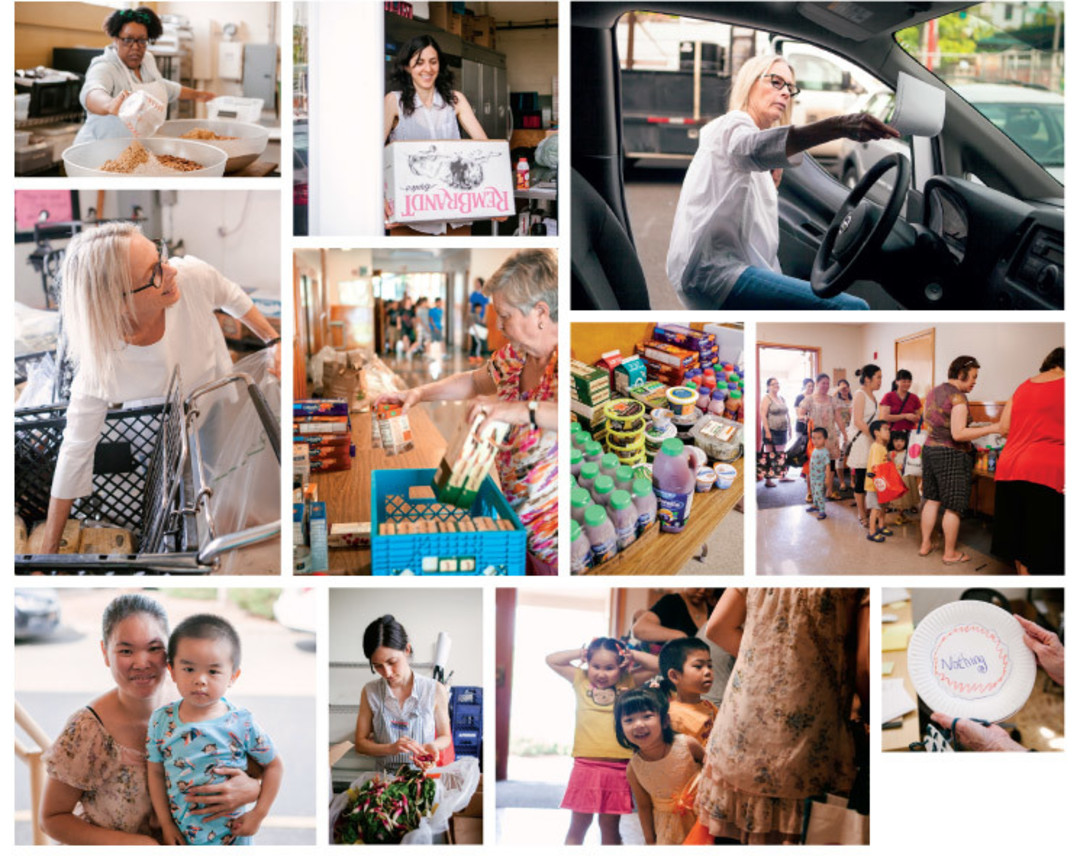Sharing Portland’s Food Supply

Image: Ashley Anderson
Editor's note: As originally published, this story incorrectly reported Zupan's Market's policies on out-of-date food products. Prior to its partnership with Urban Gleaners, the company worked with local churches and shelters to utilize as much excess inventory as possible, Zupan's corporate officers say. Portland Monthly regrets the error.
It feels almost criminal.
I’m on the loading dock of Zupan’s with Tracy Oseran. We’re emptying sagging shelves of pastries, yogurt, soy milk, and bread into boxes and carrying them to her truck. As we pull onto West Burnside, no one tries to stop us.
This get-away—actually, Oseran has Zupan's full cooperation and support—reflects a larger issue with how America manages its food supply. The Natural Resources Defense Council estimates that up to 40 percent of food in the US—133 billion pounds—goes directly into the trash, never reaching anyone’s plate. Oseran’s tiny nonprofit, Urban Gleaners, captures a small part of that excess: about 45,000 pounds of dairy, produce, and bread every month, all of it free, all of it edible. And that’s just what Urban Gleaners’ three employees and team of volunteers can transport and process.
The truck is loaded and we’re driving east, away from affluent Northwest Portland. As we pull into the parking lot of Shaver Elementary on NE 131st Avenue, volunteers stream out to help us unload. Portland has the fourth-highest big-city childhood poverty rate in the nation, and 91 percent of Shaver’s kids receive free or reduced lunch. It’s Wednesday—“food pantry” day—and already children and their parents, most of them Hispanic, are lined up outside. Shaver is one of 17 schools Urban Gleaners now serves, delivering up to 800 pounds of “reclaimed” food to each per week.
Oseran started Urban Gleaners in 2005 after hearing an NPR story about food waste. She drove to Bluehour and asked the cooks for the day’s leftovers. They filled three small Tupperware containers with fava bean purée and mushroom salad, which Blanchet House happily accepted. That small-scale delivery triggered a revelation: all of this food is out there for anyone to take. “You have to be really pushy,” says the petite 60-year-old, “which initially was hard. But I learned how to do it.” It’s paid off. This month, Urban Gleaners expands into a 3,500-square-foot space at the corner of SE Sixth Avenue and Burnside Street.
At one o’clock, one by one, Shaver parents fill Radio Flyer wagons with their allotted portions: nine apples, five potatoes, one frozen fish, one leek. Just an hour ago, their dinners had slipped into a gray zone—perfectly good, but not available.
It feels almost criminal.




